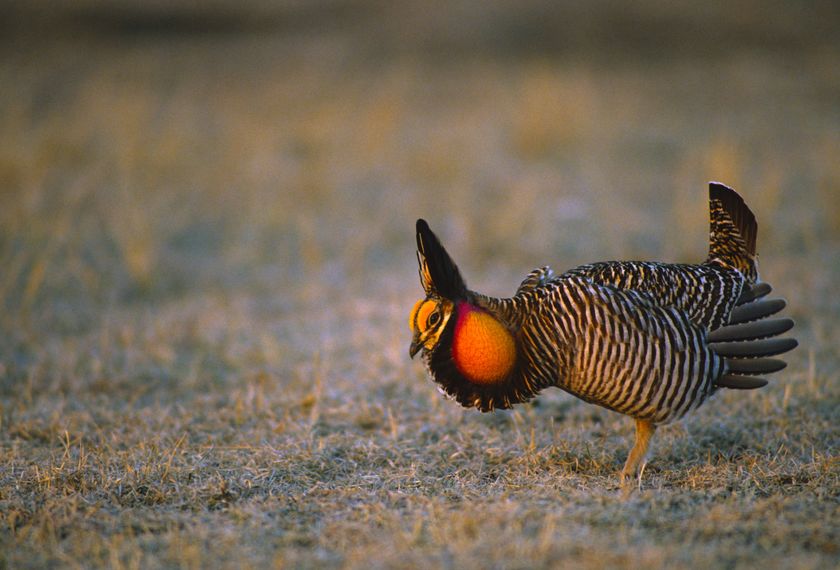Plans by the Interior Department’s Fish and Wildlife Service (FWS) to place the lesser prairie-chicken (LPC) on the endangered species list have given rise to legislation in Congress aimed at blocking the Biden administration’s move.
The lesser prairie chicken’s numbers have fluctuated wildly over recent decades. Fearful that the small, flightless bird could wind up on the endangered species list, state and local officials have joined forces with landowners in the LPC’s habitat – which stretches from Texas to Washington state – to take steps aimed at stabilizing the creature’s population. Listing of a plant or animal under the ESA – either as threatened or endangered – triggers strict land-use restrictions that could have devastating economic consequences in areas affected by the listing.
Such is the threat an ESA listing of the bird would pose to the energy and agricultural sectors in states providing habitat for the LPC, that lawmakers in the U.S. House and Senate have introduced Resolutions of Disapproval under the Congressional Review Act (CRA).
“Placing the lesser prairie-chicken on the endangered species list should not be happening in the first place,” said Sen. Roger Marshall, R-Kansas. “Farmers, ranchers, and others in Kansas and the region have been instrumental in the recovery of the species to this point while the climate activists demanding this rule have no understanding of the threat it poses to Kansas’s economy, especially in energy and ag industries.”
ESA’s Two-Percent Recovery Rate
“The Endangered Species Act, which has only a two-percent success rate of species recovery, is being used as a tool for federal takeover of energy, agriculture, and commerce in Oklahoma instead of species recovery as it was intended,” added Sen. James Lankford, R-Oklahoma. “For the lesser prairie-chicken, Oklahomans’ voluntary conservation efforts have led to increased population growth and habitat development. But the Fish and Wildlife Service is rewarding that effort with new requirements that come with adding the chicken to the endangered species list. This will mean endless federal red tape for landowners, developers, and energy producers anywhere FWS deems the chicken’s habitat. “
“Kansas and surrounding states have already invested million of public and private dollars to conserve the lesser prairie-chicken’s habitat area, resulting in the bird’s population more than doubling,” noted Sen. Jerry Moran, R-Kansas. “Listing the lesser prairie as threatened despite these locally-driven efforts eliminates any further similar efforts and will result in less wildlife conservation in the future, not more.”
Encountering stiff resisting to the listing of the LPC in affected states, the FWS has delayed the issuance of its final decision until March 27. At this point, the chicken appears all but greenlighted for ESA listing.
Under certain circumstances, the CRA can be an effective means to reining in the administrative state. Under the law, a simple majority of those present in both houses can pass a Resolution of Disapproval, and if the president signs the bill, the rule is nullified. The bill might be approved by the Republican-controlled House, but would face an uphill struggle getting the Democrat-controlled Senate to go along. And even in the unlikely event of winning Senate approval, the Resolution of Disapproval would certainly be vetoed by President Biden.
Climate activists, who have been pushing for the LPC’s listing under the ESA, do so with a view toward curtailing, or stopping, oil and gas development in Texas and Oklahoma. They have a receptive audience in the Biden administration’s political appointees at the FWS, as well as among many career officials at the agency. All have an interest in snuffing out fossil-fuel development where ever the opportunity presents itself. That their efforts could lower agricultural productivity at a time of high food prices doesn’t seem to bother them.
